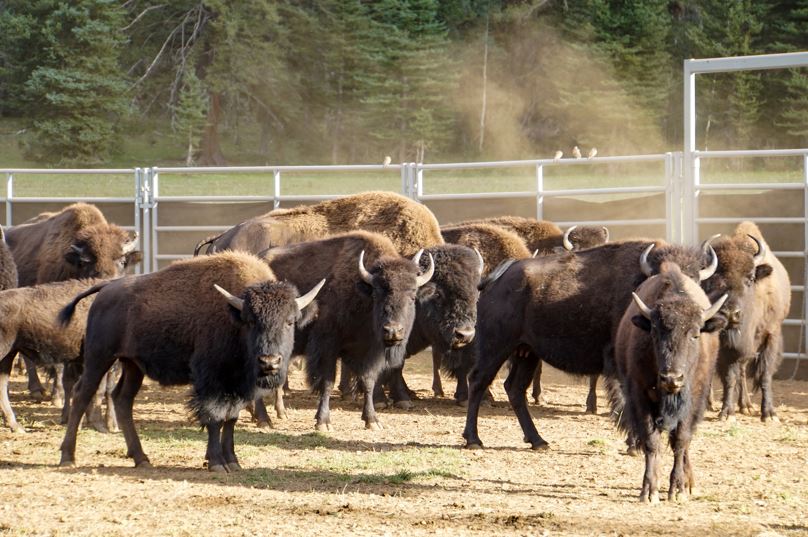News Release

NPS Photo/L. Cisneros
|
Subscribe
|
Contact: Joelle Baird, 928-606-3154
Bison reduction operations are now complete for 2021 on the North Rim of Grand Canyon National Park. In total, 36 bison were removed through live capture and transfer, and five were removed lethally, reducing the impacts of the herd on the park’s water, vegetation, soils, and culturally significant sites and locations.
In 2021, through a partnership with the InterTribal Buffalo Council (ITBC), 13 bison were transferred to the Santee Sioux Nation of Nebraska and 23 were transferred to the Cherokee Nation of Oklahoma. Since the park began transferring bison to Tribal partners in 2019, 124 bison have been relocated to six Tribes in four states through the ITBC. "ITBC appreciates this partnership with Grand Canyon National Park, which helps meet our goal of returning buffalo to Native nations in a cultural and spiritual manner," says Troy Heinert, ITBC Executive Director.
Even with the success of the live capture and transfer program, lethal removal remained a necessary tool to disperse and move the herd to protect the park's sensitive resources. Through partnership with the Arizona Game and Fish Department (AZGFD), this year, a total of five bison were culled from the Kaibab Plateau herd by highly skilled volunteers.
Bison meat and culturally significant parts of bison were donated to three federally-recognized Tribes traditionally associated with the Grand Canyon. While planning for additional reduction operations are underway, park staff are developing an agreement with all eleven traditionally associated Tribes to conduct joint-lethal removal operations in the future.
The 2021 lethal removal program, using skilled volunteers, ended in late October and achieved the important objective of making the park less of a refuge for bison, encouraging them to move more widely across the landscape. “I am extremely proud of this team who has worked tirelessly on this complex and important resource management challenge,” said Grand Canyon National Park Superintendent Ed Keable. “Their commitment will have lasting impacts to the natural and cultural resources on the North Rim well into the future.”
Grand Canyon would like to thank the multiple agencies and organizations involved with bison management on the Kaibab Plateau. The National Park Service (NPS) continues to collaborate closely with partners at the InterTribal Buffalo Council, AZGFD, USGS-Fort Collins Science Center, U.S. Forest Service, and the NPS Office of Public Health to implement the 2017 Initial Bison Herd Reduction Plan.
In 2014, the NPS initiated a science-based planning process to manage bison overpopulation at Grand Canyon National Park. In 2017, using the best science available and working closely with the public and American Indian tribes, the park finalized the Initial Bison Herd Reduction Plan to reduce the herd from 600 to fewer than 200 bison using live capture and transfer, as well as limited lethal removal. This goal is being met as the 2020-2021 winter population estimate for the herd is approximately 400 animals.
For more information on bison management at Grand Canyon National Park, please visit: https://www.nps.gov/grca/learn/nature/bison.htm.
-NPS-
- Duration:
- 9 minutes, 39 seconds
This video presents an overview of bison management on the North Rim of Grand Canyon National Park. By 2025, the National Park Service will reduce the size of the overpopulated Kaibab Plateau bison herd through live capture and transfer to American Indian Tribes and lethal removal with Skilled Volunteers. Grand Canyon National Park is reducing the size to under 200 in order to protect park resources—including vegetation, water, and sacred archeologic sites—from the impacts of the bison.
Last updated: September 28, 2023
